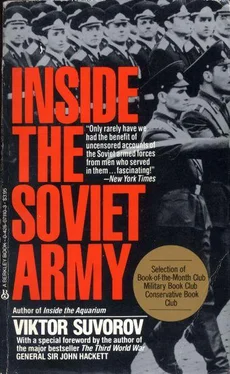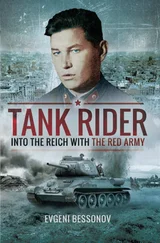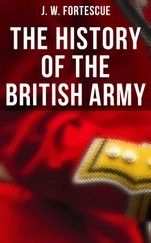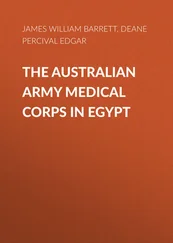2
Remembering the war, Soviet generals insist that defence must mean, first and foremost, defence against tanks. The enemy can gain victories only by advancing and, in the nuclear age, as before, offensive operations will be carried out by tanks and infantry. Other forces can not carry out an offensive: their only role is to support the tanks and the infantry. Thus, defence is essentially a battle against tanks.
The most important weapon in achieving victory is the tank. The most important weapon in depriving the enemy of victory is the anti-tank weapon. The Soviet Union therefore devotes great attention to the development of anti-tank weapons. As a result, it is frequently the first in the world with really revolutionary technical and tactical innovations. For example, as early as 1955, the USSR began production of the `Rapira' smoothbore anti-tank gun, which has an astonishingly high muzzle velocity. In its introduction of this weapon it led the West by more than a quarter of a century. In the same year a start was also made with production of the APNB-70 infra-red night sight, for the `Rapira'. Sights of this type were not issued to Western armies for another ten years.
The, Soviet Army takes exceptionally strict measures to safeguard the secrets of its anti-tank weapons. Many of these are completely unknown in the West. The Chief Directorate of Strategic Camouflage insists that the only anti-tank weapons which may be displayed are those which can be exported-in other words the least effective ones. The systems which may not be exported are never demonstrated but remain unknown from their birth, throughout their secret life and often, even, after their death. We will say something about these later.
3
Because they consider anti-tank warfare to be so important, Soviet generals insist that every soldier and every weapon system should be capable of attacking tanks.
Every soldier is therefore armed with a single-shot `Mukha' anti-tank rocket launcher. These rocket launchers are issued to all motor transport drivers and to those belonging to staff, rear-support and all other auxiliary sub-units.
When the BMP-1 infantry combat vehicle was being developed, the designers suggested a 23mm gun as its armament-this would be effective against infantry, and is simple and easy to load. But the generals opposed this; as a first priority, the vehicle must be capable of opposing tanks; it must have anti-tank rockets and a gun which, even though small, could be used against tanks. The BMP-1 was therefore fitted with a 73mm automatic gun, capable of destroying any enemy tank at ranges of up to 1,300 metres, with anti-tank rockets which can be used over greater ranges. The fact that 20mm automatic guns are fitted to Western infantry combat vehicles is met with friendly incomprehension by Soviet military specialists: `If such a vehicle is not capable of taking on our tanks, why was it built?
It is true that a light anti-aircraft gun has recently been mounted on the BMP. But this does not indicate any alteration in its main function. This gun is installed as an auxiliary weapon, to supplement the anti-tank rockets and also as an anti-helicopter weapon. In other words, it is intended for use against the flying tank. Incidentally, the decision to fit it was taken only after the designers had been able to demonstrate that it could also be used against conventional, earthbound tanks.
All other Soviet weapon systems, even if they are not primarily intended as anti-tank weapons, must also be able to function as such. Accordingly, all Soviet howitzers are supplied with anti-tank shells and anti-aircraft guns are much used against tanks-their teams are trained for this role and are issued with suitable ammunition.
But this is not all. The new AGS19 Plamya rocket-launcher and the Vasilek automatic mortar can also be used against tanks, as a secondary function. They each have a rate of fire of 120 rounds a minute and both are capable of flat trajectory fire against advancing tanks.
Finally, the BM-21, BM-27, Grad-P and other salvo-firing rocket launchers can fire over open sights and flood oncoming tanks with fire.
Why are Anti-tank Guns not Self-propelled?
1
Why does the Soviet Union not use self-propelled anti-tank guns? This is a question which many are unable to answer. After all, a self-propelled gun is far more mobile on the battle-field than one which is towed, and its crew is better protected. This question has already been partially answered in the last chapter. The Soviet Union has some excellent self-propelled anti-tank weapon systems-but it does not put them on display. Nevertheless, it is true that towed guns are in the majority. Why is this so? There are several reasons:
Firstly: A towed anti-tank gun is many times easier to manufacture and to use than one which is self-propelled. In wartime it might be feasible to reduce the production of tanks; the effect of this would simply be to reduce the intensity of offensive operations. But a drop in the production of anti-tank weapons would be catastrophic. Whatever happens, they must be produced in sufficient quantities. Otherwise any tank breakthrough by the enemy could prove fatal for the whole military production programme, for the national economy, and for the Soviet Union itself. In order to ensure that these guns are turned out, whatever the situation, even in the midst of a nuclear war, it is essential that they should be as simple in construction as possible. It was no chance that the first Soviet smoothbore guns to be produced were anti-tank guns. Smoothbore guns for Soviet tanks were brought out considerably later. Although a smooth barrel reduces the accuracy of fire, it enables muzzle velocity to be raised considerably, and, most important of all, it simplifies the construction of the gun.
Secondly: A towed gun has a very low silhouette, at least half that of a tank. In single combat with a tank, especially at maximum range, this offers better protection than armour plate or manoeuvrability.
Thirdly: Anti-tank guns are used in two situations. In defence, when the enemy has broken through, is advancing fast and must be stopped at any price. And in an offensive when one's own troops have broken through and are advancing rapidly, and the enemy tries to cut through the spearhead at its base, with a flank attack, cutting off the advancing forces from their rear areas. In both these situations, anti-tank guns must stop the enemy's tanks at some pre-determined line, which he must not be allowed to cross. Towed guns are compelled, by the weight of their construction, to fight to the death. They are unable to manoeuvre or to move to a better position. Certainly, their losses are always very high. That is why they are traditionally nicknamed `Farewell, Motherland! But by stopping the enemy on the predetermined line, the anti-tank sub-units can save the whole division, Army and sometimes the whole Front. This is what happened at Kursk. If the anti-tank guns had been self-propelled, their commander would have been able to withdraw to a more advantageous position when he came under enemy pressure. This would have saved his small anti-tank sub-unit, but it might have brought catastrophe to the division, the Army, the Front and perhaps to several Fronts.
Lest seditious thoughts should enter the head of the anti-tank commander, and so that he should not think of pulling back in a critical situation, his anti-tank guns have no means of propulsion. In battle their armoured tractors are housed in shelters; they would scarcely be able to pull the guns away from the battle, under the deadly fire of the enemy. Only one option is available to the crews-to die on the spot, as they prevent the enemy from crossing the line which they are holding.
Читать дальше












